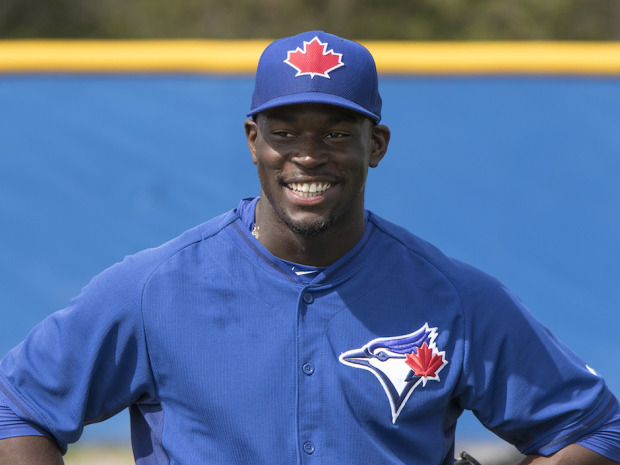
(http://news.nationalpost.com/sports/mlb/toronto-blue-jays-reportedly-send-drew-hutchison-to-triple-a-ahead-of-road-trip)
I’ve only been an emotionally-invested fan of baseball for about 15 years, and prior to this October my experience with the post season was almost entirely imaginary; yet I can say with some significant level of confidence that a pitcher going from Opening Day starter in the spring, to fringe roster-worthy in the summer, to off the playoff roster altogether in the fall – without any involvement of injury – is a pretty rare occurrence. As you’re all very well aware, this is precisely the story of Drew Hutchison’s 2015.
Taking the place of injured ace Marcus Stroman, Hutch won on Opening Day in the Bronx in what was the pinnacle moment of his year, as things unravelled immediately thereafter. In four of his next five starts, Drew failed to complete five innings, but thanks to borderline unprecedented run support, he didn’t lose his first game until his ninth start, on May 20th. He wasn’t able to shake the spring struggles, either; in a ten start stretch from June 12th through August 5th, he completed six innings just once. “Quality starts” are largely a useless statistic, but it speaks volumes that Hutch met the embarrassingly low threshold in just nine of his twenty-eight starts. Drew was briefly sent to Triple-A in mid-August as the team temporarily shifted to a four-man rotation, but this wasn’t even his lowest point – that would be the entire month of September, in which Hutchison allowed 24 hits (including 7 home runs), walked 4, and surrendered 18 runs in just 11.2 innings of work.
When the Blue Jays began post-season play, Hutchison understandably found himself off the 25-man and down in Dunedin, staying in shape just in case he was needed. On October 9th, it looked like it might happen; shutdown lefty Brett Cecil tore his calf on an innocent enough looking play in game two of the ALDS, necessitating an addition to the roster. Instead, in perhaps the most damning indication of Hutchison’s remarkable fall from grace, the organization called on Ryan Tepera. To compare this to a more relatable office setting; it’s like starting a project as the lead, and just a few months later, your manager doesn’t even trust you to make the photocopies.
It wasn’t supposed to be like this. In 2014, his first season back from a year-long Tommy John-induced layoff, Hutchison looked really good. The rust was still apparent, but the stuff had come back and then some. His 11.0% swinging strike rate was the 14th best among qualified starters, slotted just behind aces Stephen Strasburg and Madison Bumgarner, and a nose ahead of Garrett Richards, Alex Cobb, and David Price – unquestionably elite company. What really had fans excited for Hutchison’s 2015 was how the right hander concluded the season. In September, he had a 15.8% swinging strike rate and 67.8% contract rate, which ranked first and second respectively among qualified starters. It felt like a legitimate breakout, as Hutchison seemed almost unhittable.
Amidst the throes of a long winter and an even longer offseason, the internet was flush with articles linking Hutchison’s excellent second half to a potential dark-horse run at a Cy Young Award – and not by biased Blue Jays fans, either. The most tantalizing of such stories was written by Tony Blengino of FanGraphs who, in accounting for batted balls type, batted ball authority, and strikeout/walk rates, suggested Hutchison’s “TRU” ERA in 2014 was 3.19, and concluded that a top-five finish in the Cy Young was not out of the question in 2015.
Most of the credit went to an intriguing development with Hutchison’s slider. As these pieces at FanGraphs and Bluebird Banter detail, over Hutchison’s last seven starts of 2014, his breaking ball transformed from a hard, horizontal spinner that almost resembled a cutter, to a notably slower pitch with a lot more vertical depth. Jeff Sullivan concluded his FanGraphs piece with “Somewhere in August, Drew Hutchison figured out his breaking ball. Now it’s on the league to try to figure out Drew Hutchison.”
Unfortunately, the league never had to adjust to Hutchison’s new slider, because at some point between October and March, he lost it himself. The analysis below focuses on the velocity, movement, spin angle, and spin rate of his slider on a month-by-month basis over the course of the last two seasons, and it shows just how sporadic the breaking ball became as its owner seemingly delved into every nook and cranny of its existence in search of answers.


